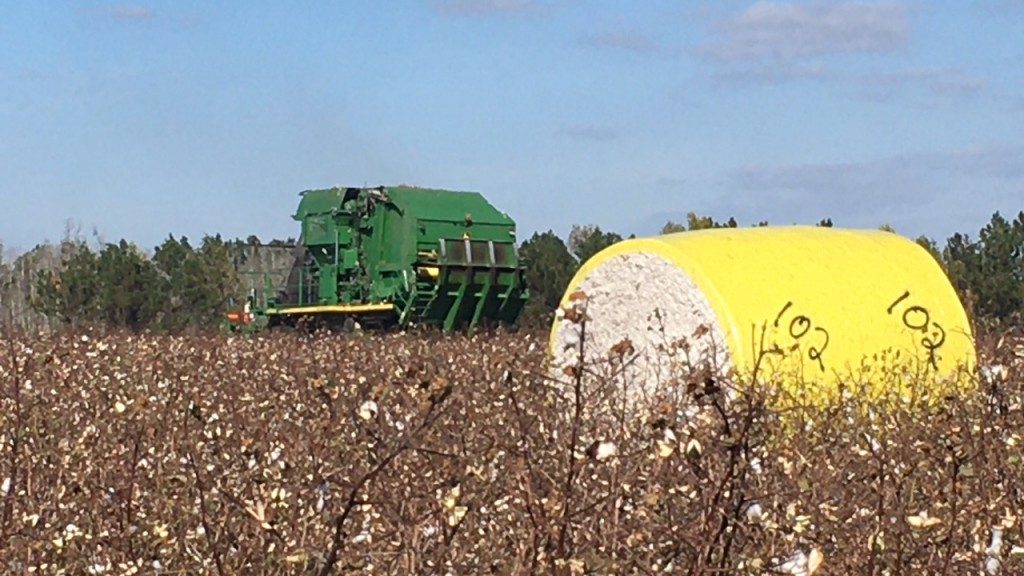I have been receiving a few questions about peanut inoculants from area growers and retailers. Below are a few comments from Scot Monfort, UGA Peanut Agronomist, on this subject.
Inoculants
Last year was a very hot and dry year. In those conditions, the survivability of the living Bradyrhizobia bacteria needed to inoculate peanuts is generally reduced. Thus, there may less than adequate nodulation of peanut in some fields or some parts of fields if relying solely on native soil Bradyrhizobia to infect the roots of peanut for N-fixation this season. This is true even if planting in short rotation where peanut was planted within the last few years.
I would recommend growers strongly consider the investment in a peanut inoculant at-planting this year, especially in fields that did not have any cover crop residue on them last year to minimize direct heat impact and reduce evaporation of soil moisture in the upper portion of the soil profile. It has been stated before by my predecessors and colleagues, an inoculant application is one of the most cost-effective “insurance policies” at a grower’s disposal.
Depending on the product used and contract price received for peanuts, it usually takes in the neighborhood of 100 lb/ac yield increase to cover the cost of the product. It is common in my research trials and in reviewing research from colleagues to get greater than 100 lb/ac yield increase on average over multiple years of trials even in a standard rotation. More importantly is to consider the cost of NOT applying an inoculant and having a nodulation failure where there is not adequate N-fixation. The cost of applying the amount of N needed by peanut would greatly exceed the cost of applying an inoculant over the course of many, many years. The risk of not getting a return on investment for an inoculant compared to the risk of potentially losing a large proportion of yield potential one year is not an equal level of risk in my opinion.
Keep in mind that the product is listed on the label to be delivered at around 1.0 fl oz per 1,000 linear row feet (may differ slightly depending on which product is selected). This is developed for single row application! Inoculant application is not like adjusting seeding rate, where you are pulling half of the amount out and moving it over to the adjacent twin furrow. With an inoculant, the applied amount needs to be per furrow according to label instructions. Therefore, a twin row planting inoculant application will double the amount of inoculant applied compared to a single row planting. I have no data at this time to support using a half-rate of inoculant per furrow to keep the total application rate per acre the same as a single row planting.
What about managing spotted wilt, seedling disease and early season white mold?? The questions above are common concerns from area peanut growers. Aspergillus and white mold affected many growers last year. Below are a few comments from Bob Kemerait, UGA Plant Pathologist. Note: The rates provided here are on a “per/A” basis. Typically, the full rate can be placed in single rows; the rate is typically halved per twin row. For example, Abound, 6.0 fl oz/A in-furrow for single rows becomes Abound, 3.0 fl oz/A in each of the twin rows.
Management of tomato spotted wilt: A number of products can be used to manage thrips on peanuts. However, only one product, Thimet (active ingredient: phorate) is effective in reducing the risk to this disease. The reduction in risk to tomato spotted wilt is not related to the thrips control that it provides, rather is seems to be associated with the response of the plant to Thimet. Thimet likely activates defense-response genes in the peanut plant that help to protect the plant from the virus. Growers who want to plant early (before May 1), or who want to use cultivars with spotted wilt risk points greater than those of Georgia-06G, might especially want to consider to using Thimet for management of tomato spotted wilt.
Management of seedling diseases: Peanut seed and young seedlings are susceptible to attack from a number of fungal pathogens. The two most important fungal pathogens causing death of peanut seedings in Georgia are Rhizoctonia solani and Aspergillus niger. Fungicide seed treatments are a critical tool to manage seed rots and seedling diseases; currently nearly all seed is treated with Dynasty PD. Dynasy PD is composed of azoxystrobin, fludioxonil, and mefenoxam. However, growers can also protect the developing plants from seedling diseases with in-furrow fungicide applications of fungicides like Abound (5.7-11.4 fl oz/A), Proline (5.7 fl oz/A), and Evito (2.3-3.5 fl oz/A). These fungicides are typically used to compliment seed already treated with a fungicide seed treatment.
The most effective in furrow spray for stand establishment has been Abound, although Proline also has activity on these pathogens and Evito is labeled for this use as well. The benefits of these products have not been as consistent in recent years, and research is underway to determine the factors involved.
Management of Cylindrocladium black rot (CBR) and early-season white mold. Proline (5.7 fl oz/A) applied in-furrow has been an important treatment for the management of CBR. Though this disease has been less widespread in recent years, an application of Proline in-furrow is still useful where there is a threat of CBR. When favorable conditions, such as very warm weather, occur early in the season, in-
furrow applications of Proline also offer some protection from early-season white mold. The extent of the protection is likely less than that provided by banded applications of Proline 3-5 weeks after planting. Decisions to use Proline in-furrow should be made based upon a) risk to CBR, and b) risk to early-season white mold (although there are effective alternatives for white mold).
